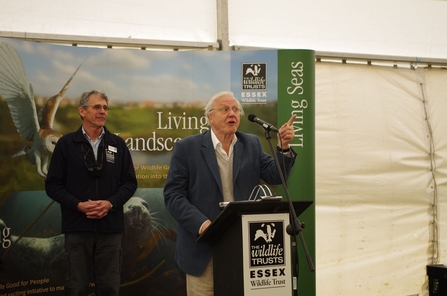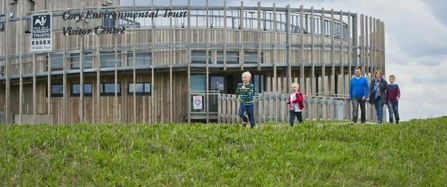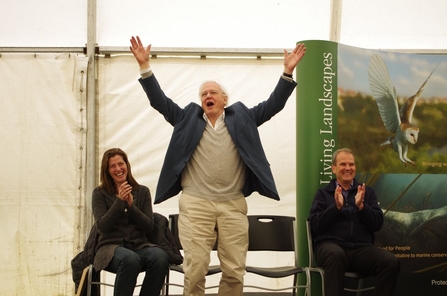
Sir David Attenborough officially opened Essex Wildlife Trust’s Thurrock Thameside Nature Park on Saturday 11 May 2013.
Thurrock Thameside Nature Park is an astonishing project, whose vital statistics push all boundaries of scale and wildlife recovery. It has transformed the environment of the nearby community. It is one of The Wildlife Trusts’ largest-ever restoration projects, restoring Mucking Landfill to recreate a range of fantastic wild habitats. The 120-acre site will eventually expand to cover 845 acres and sits on top of a ‘pie-crust’, which caps 50 years of waste from six London boroughs, up to 30 metres deep. This former landfill site now attracts rare bees, birds and reptiles and provides a wonderful haven, through a network of paths, bridleways and cycle routes, for people to enjoy.


